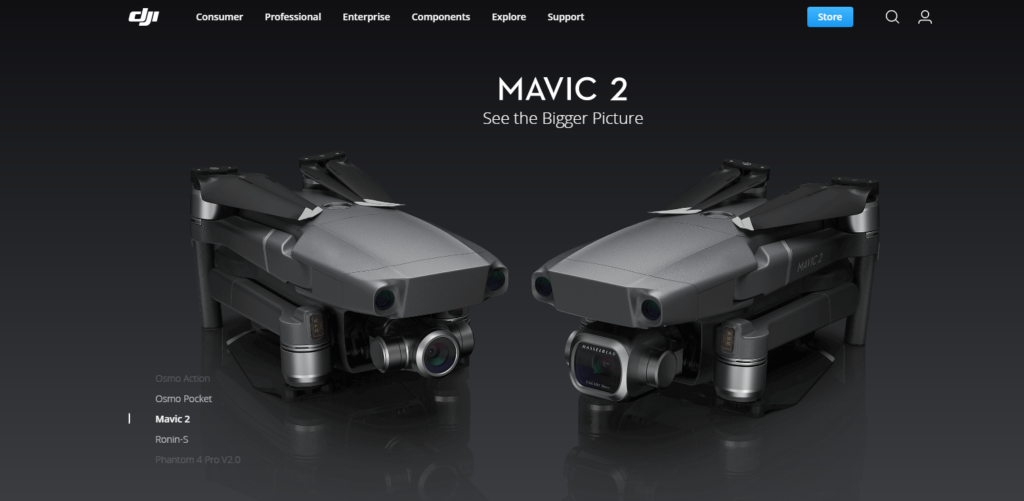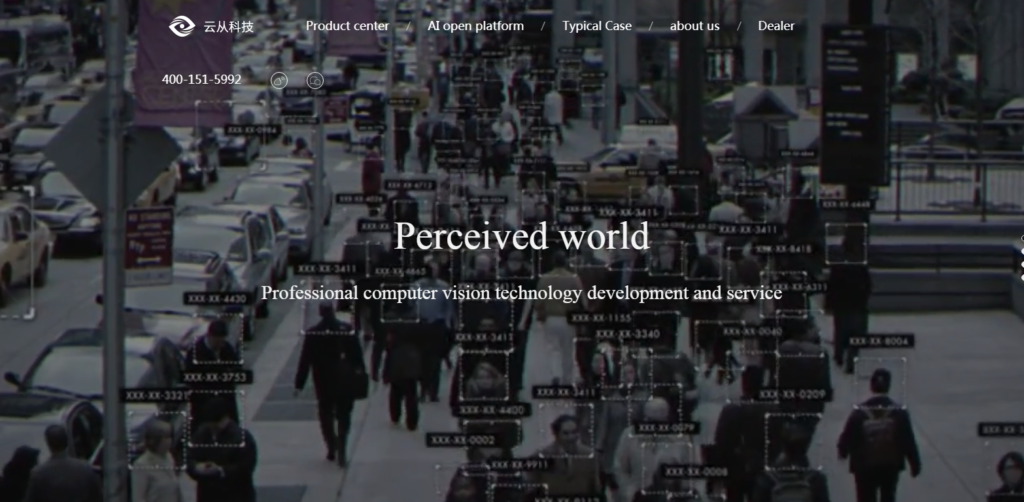The names of top AI companies of China aren’t that well-known though the subject of Artificial Intelligence (AI) crops up in every other technology conversation.
Despite their ground-breaking, and sometimes controversial, work that they do, top AI startups and companies in China aren’t as well-known to the common man as say, Facebook, Alibaba, Google, Baidu or IBM.
Some of them are very highly valued (and respected) unicorns. Others have shown tremendous inclination and enterprise in fundamental research. What remains common across all of them is their hunger to bring something innovating, something revolutionary, something fast.
Here’s the list of the 4 major AI companies from China:
1. DJI

Formal name: SZ DJI Technology Co., Ltd., operating as DJI
Company background: The company was founded in 2006 by Frank Wang, an alumnus of Hong Kong University of Science and Technology. Headquartered in Shenzhen, China, DJI began with drones. Even today, it is a market leader in drones with an estimated 70% market share.
Primary product: Drones
Why DJI matters:
Why are we ranking a drone company in a list of China’s most valuable AI companies?
The reason is simple.
Drones have come far from being simply flying cameras. They are becoming smarter in maneuvering. DJI is working hard towards constantly improving its image recognition to avoid objects that a drone encounters during flight. And this – you guessed it – uses AI design principles. Its Phantom 4 drone is a good example there.
Research for its latest models, like the Phantom 4 drone, which uses image recognition to avoid objects, routinely incorporate AI design principles.
But that’s not all.
The technology that DJI is using and developing covers three areas simultaneously: drone technology, robotics and artificial intelligence. For instance, DJI is incorporating sensor technology and computer enabled vision in the both the current drones it sells and the next generation drones and devices it is working on.
Apart from the Phantom 4 done, its Mavic Pro is quite impressive as far as AI goes. Apart from the traditional remote controller, the Mavic Pro can also be controlled with gesture commands. It also has the capability to learn – deep learning, technically. Besides that, it has the ability to map the entire environment based on this learning and its image recognition technology.
As per their website, “ [their] flying and camera stabilization systems redefine camera placement and motion.”
Major products or brands: DJI’s Mavic line, The RoboMaster S1, DJI’s Phantom 4.
Recent, well-known projects: DJI has teamed up with Microsoft to collect real-time data into a computer, with DJI drones. This has various business and industrial applications, like for oil companies to track flow in pipelines or for power companies to spot faults across its power lines.
Future plans: DJI is looking at educational fighting robots. It is also believed that DJI is foraying into self-driven vehicles and advanced robotics. Considering that it has built serious expertise in image recognition and analysis powered by AI this doesn’t sound far-fetched.
Estimated valuation: US$ 15 billion
2. Ubtech

Formal name: Ubtech Robotics
Company background: Ubtech is based in Shenzhen, Guangdong Province China, a city that’s favorably called China’s Silicone Valley. It was founded in 2012. It had its own share of tough times in the early days.
It has garnered a funding of US$940 million. That’s one important reason to place it on the list of top AI companies of China.
It is world’s most highly valued AI company today.
Primary product: Robots
Why Ubtech matters:
Ubtech has been rather plucky. The founder James Zhou started out by making the Alpha 1S robot, which were followed by Alpha 1 Pro and Alpha 2. These robots’ better motion-control got them noticed instantly.
Two partnerships took Ubtech into the big league.
One was with Apple. In a special arrangement with Apple, Ubtech gets to sell its Jimu Robot, targeted at children. Jimu is a STEM-friendly robot and is available at many Apple stores both within and outside China.
The second came in terms of strategic funding from Tencent, China’s internet-technology giant. With a US$120 million funding, Tencent is expected to receive a strong help for its own AI products.
In its search to get children more skilled and scientific in robotics right from school, Ubtech setup a separate division Ubtech Education. Partnering with Pitsco Education, aims to provide various schools access to Yanshee humanoid educational robot, under its STEM+C drive (Science, Technology, Engineering, Math + Computer science).
Major products or brands: Cruzr, Jimu, Alpha
Recent, well-known projects: Lynx, a robot with Amazon Alexa’s features.
Future plans: Ubtech is looking at creating large, human-sized robots, or humanoid robots. This need all the computer-aided vision, motion control and AI algorithm technology Ubtech can put together. Also on anvil are plans to create a robot security car. It is also planning to usher a solution for the service robot industry by 2021.
Estimated valuation: US $ 5 billion
3. CloudWalk

Formal name: CloudWalk Technology Co. Ltd.
Company background: CloudWalk was founded in 2015. The founder Zhou Xi comes with a strong training in artificial intelligence and pattern recognition.
CloudWalk was incubated under the ongoing startup incubation program of Chinese Academy of Sciences (CAS), an institution that was founded way back in 1949. Currently, the CAS oversees 124 institutions and 5 universities, including the UCAS.
In its early days, CloudWalk supplied facial recognition technology to China’s border control. Today, out of the 34 provincial level authorities in China, 24 use this facial recognition terminals along with scanning door entry services.
Primary product: Facial recognition software
Why CloudWalk matters:
In a span of barely 4 years, CloudWalk has found a sizeable number of uses of its core technology – facial recognition. Banking and financial institutions have used this technology the most.
Bank of China, the world’s fourth largest bank as per assets, uses CloudWalk’s face recognition for identity authentication. This authentication is used in the device that issues resident health cards. In all, 100 large-scale banks operating in China.
The Agriculture Bank of China uses CloudWalk’s facial recognition services for efficiency, accuracy and security of its self-serving machines.
CloudWalk was tasked to build two major projects for China’s National Development and Reform Commission. The first one of this was Infrastructure Public Service Platform” while the second one was “Facial Recognition System Industrial Application Platform.”
AI, through facial recognition, helps governments and institutions in improving service efficiency, track employees and identify criminals.
CloudWalk has also designed and developed big data platforms for public security, by recognizing airline passengers.
Major products or brands: Face recognition terminals, infrared binoculars scanning machines
Recent, well-known projects: Cloudwalk, some time back, inked a deal with Zimbabwe that will build a country-wide facial recognition database to assist all major transportation hubs in monitoring fleet movement. The system will lead to the creation of a national facial ID database.
Future plans: CloudWalk’s research is looking at developing deeper competence in 3D face recognition and person re-identification.
Besides that, it is working with Aston Martin Rapid S and LeTV LeSee for future cars that read the drivers face and change settings accordingly.
Estimated valuation: US $ 2 billion
4. SenseTime

Formal name: SenseTime Group Limited (Shangtang Technology)
Company background: SenseTime was founded in 2014 in HongKong. Probably because one of its key founders is a professor, SenseTime encourages extensive research.
Primary product: AI service provider
Why SenseTime matters:
Google AI companies China and SenseTime will likely appear in all the results. Multiple reasons account for why SenseTime is counted in one of the most important AI companies from China.
SenseTime remains a little ahead of its time. In 2014, it displayed its face-recognition system DeepID. This was the first system that had an accuracy rate in face recognition than human eyes (Facebook’s system came later).
Its stress on research can be gauged from the fact that it has been producing research papers consistently.
In 2016, for instance, a total of 16 papers from SenseTime were accepted at the CVPR Conference alone. What’s more, the company won the first prize in object detection and scene analysis, in addition to video object detection.
SenseTime has a number of important technological partnerships. It partnered with Qualcomm for on-device intelligence. This is believed to have advantages like real-time performance and privacy protection over cloud-only implementations.
SenseTime has partnered with E-drive along with Shanghai Municipal Corporation for building intelligent municipal transport system. The tie-up found fresh applications of face recognition – like identifying fatigue of drivers with face scanning technology.
Besides this, SenseTime has partnered with Honda for autonomous cars of the future. In February 2018, SenseTime announced joining hands with MIT to further research in AI.
Major products or brands: Algorithm provider for smart cities, smart phones, online retail and much more.
Recent, well-known projects: Shangtang has become the fifth largest national artificial intelligence open innovation platform after Aliyun, Baidu, Tencent and Keda Xunfei.(Source)
Future plans: AI Open innovation and deep learning
Estimated valuation: US$ 1.5 billion
